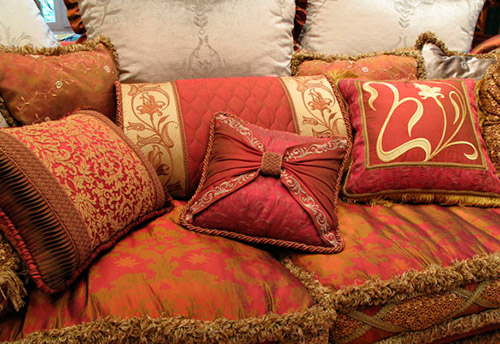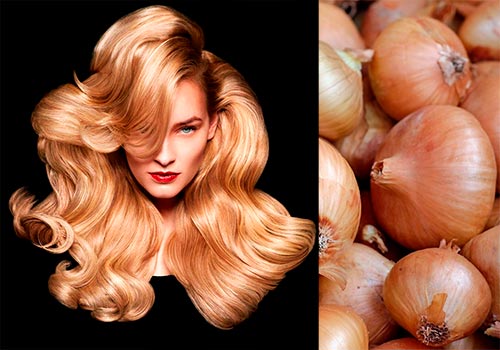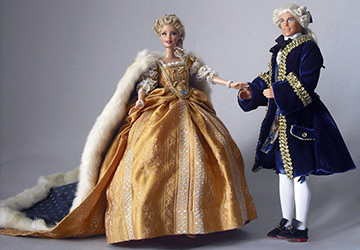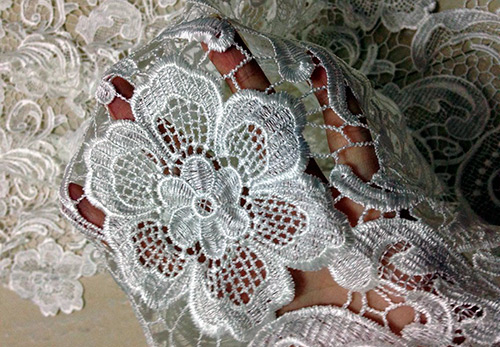Materials Science
Oriental ikat fabrics in history and modern fashion
Ikat fabric is actively used by successful designers to create fashionable collections of women's clothing. Today ikat is made on modern equipment of textile factories, and earlier ikat from cotton and silk was woven with the help of simple devices and manual labor. Natural dyes were also used - onion peel, pomegranate, walnut and others. But let's not get ahead of ourselves, let's remember the history of the fabric, how it all began ...
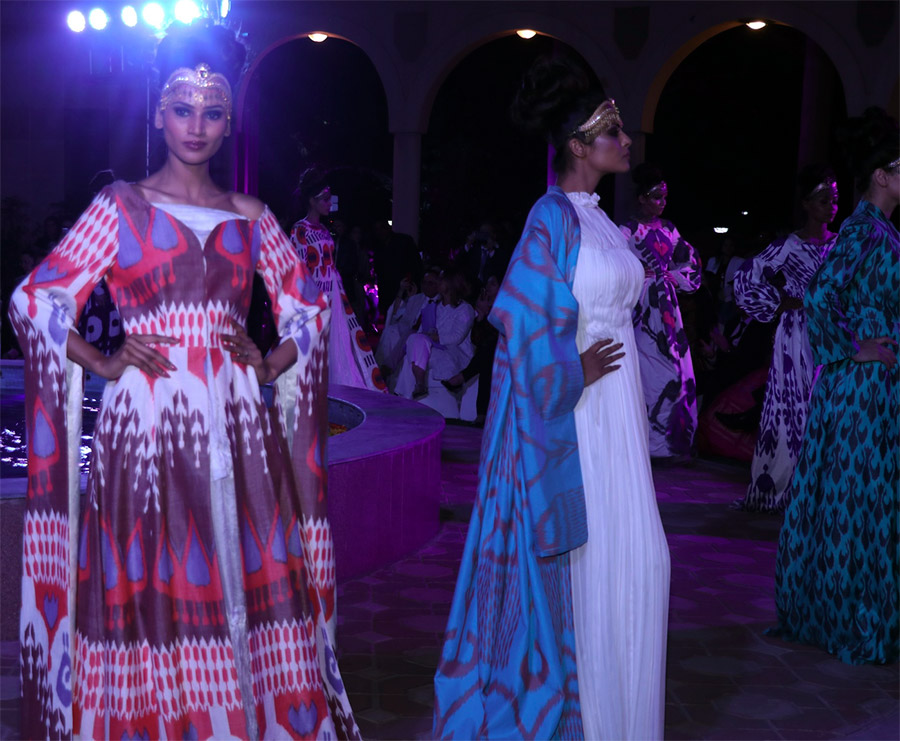
The former capital of Tamerlane's empire is Samarkand. Its old residential quarters retain an oriental atmosphere. And the main attractions of this city are the Gur-Emir mausoleum with the grave of the great conqueror, the Shahi-Zinda necropolis, the Bibi-Khanym mosque and the Registan square.
Bukhara is a real museum, where the historical center looks almost the same as it did 500 years ago. In addition to ancient architectural buildings, mosques and mausoleums, in Bukhara, forgetting about time, there are craft workshops in which silk, carpets, various fabrics are woven, and embroidered.
Masters of pottery, chasing and other crafts live in Bukhara. Khiva ... is a fully preserved medieval city surrounded by fortress walls. Thousands of years ago, caravans loaded with silk and spices went from East to West through Bukhara, and therefore there was always a lot of silk here.
In Uzbekistan, both the past and the present are mixed. But, as in ancient times, so in the present, bright clothes are loved here. Dresses, sundresses, robes, bloomers are full of bright colors and flowers.
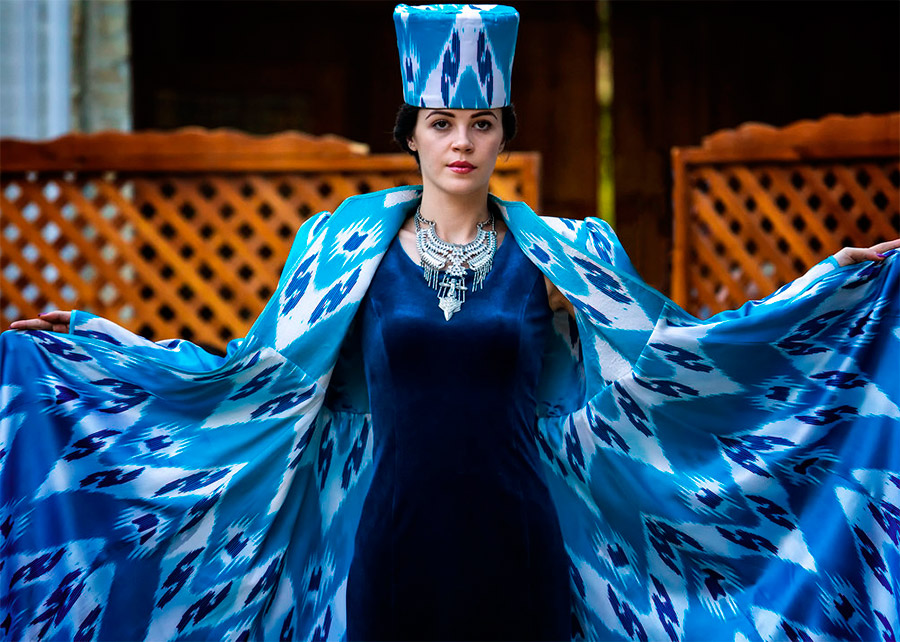
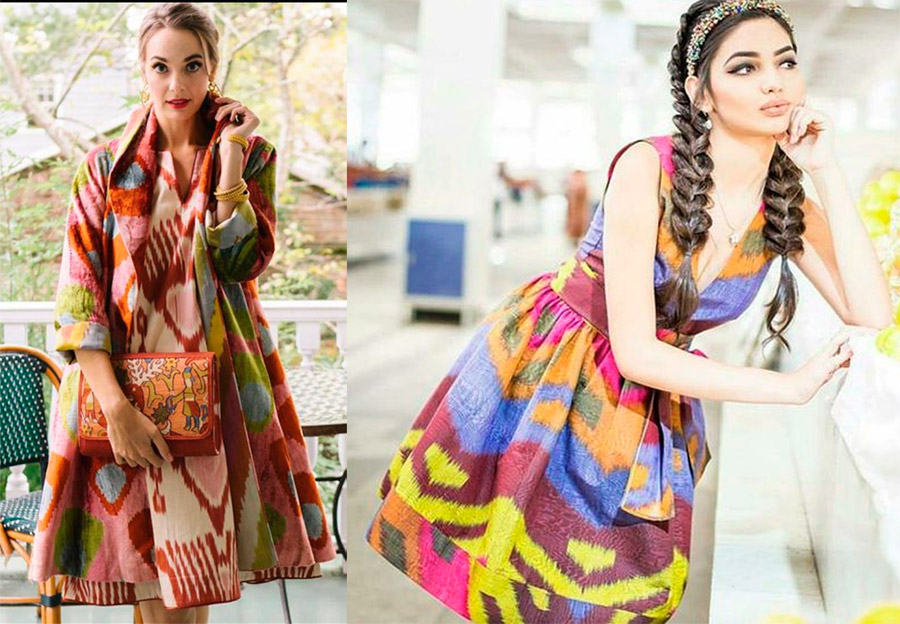
The ancient cities of Central Asia, located along the Great Silk Road, were famous for the production of weaving for centuries. Those who were lucky enough to visit Central Asia have probably forever remembered the amazingly bright fabrics with iridescent transitions. This is an ikat, which can be called one of the hallmarks of the ancient East. And lovers of travel, most likely, know about it, and perhaps brought this interesting fabric in memory of their visit to Central Asia.
Ikat is a luxurious fabric and a great souvenir, but today it is not necessary to pack for it on the road. This fabric can be bought in online stores of oriental goods ...
Ikat - what is this fabric?
Under the name ikat, not only the fabric itself is considered, but also the method of its manufacture. The peculiarity and difficulty in the manufacture of fabric lies in the fact that the colors are applied to the threads in advance, that is, before the fabric is woven.
Each thread can be dyed up to three times. At the same time, before painting, the master ties each strand to protect those areas that should not be painted in this color. The very word "ikat" comes from the Malay term, which means "strapping". The threads are pulled into bundles and dipped in dye. In those places where there was a screed, the threads remain white.
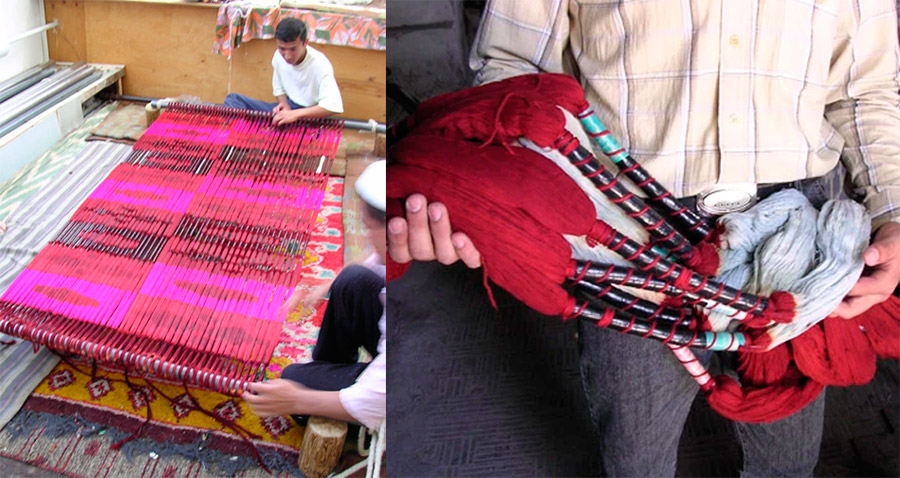
If you need to paint in several different colors, apply the screed again and paint a second time. When the dyeing is complete, the threads are pulled onto a loom and woven by hand. Depending on which threads are used, different types of fabric are obtained. For example, the fabric of adras, shoyi, khan-atlas, bakhmal and many others.
In the color palette, there is always a blue, yellow, red of different shades, green, which is obtained by successive dyeing - first blue, then yellow. And the patterns and symbols woven into the fabric, it turns out, also make sense, some of them protect the wearer from trouble, bring happiness and good luck.
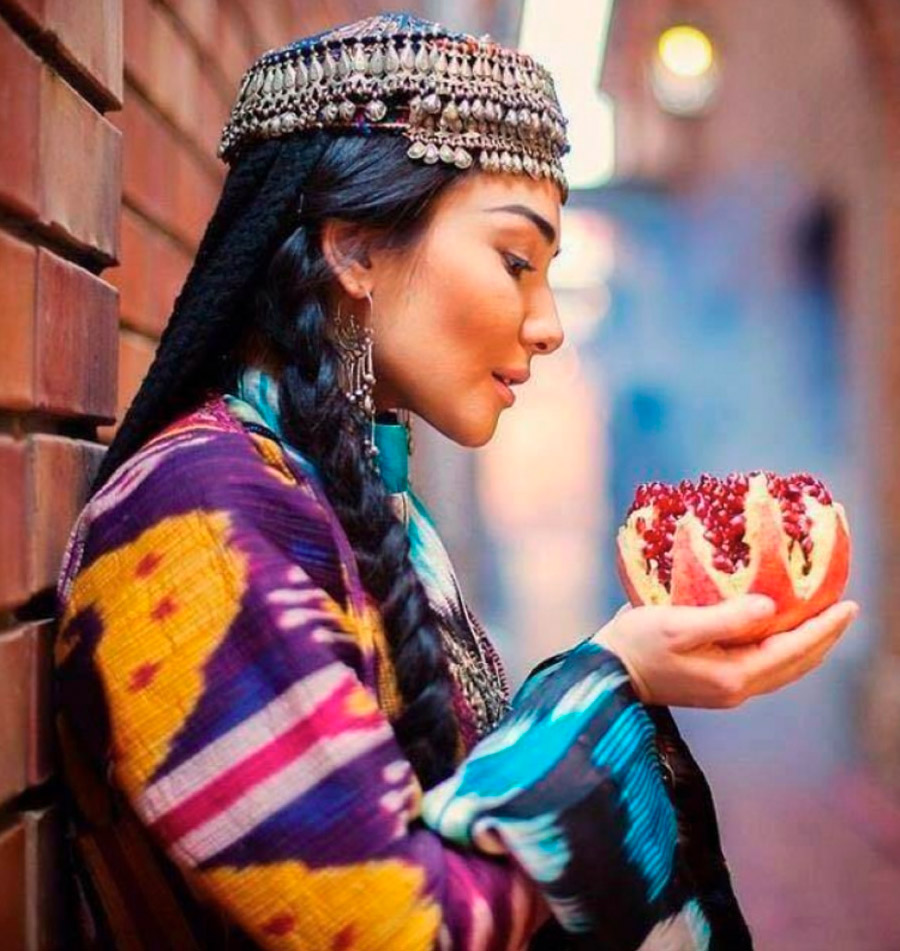
Ikat story
Ikat is a pattern that intertwines lines and colors, creating intricate geometry known only to one master. Sometimes different images and figures are born.Historical researchers dealing with the origin of textiles still cannot come to one conclusion - how and where did the ikat originate? Some argue that its origins should be sought in southern China, others in India.
However, the fabrics that were found in the archaeological excavations of these countries are completely different from the Central Asian ones. But let's not forget that the Great Silk Road passed through these countries, including the countries of Central Asia, so the splendor of this craft was certainly passed on and developed.
The earliest finds are found in Central Asia and the Far East. For example, in the exposition of the Horyuji temple (in Japan) you can see many works of art, including fragments of fabrics that look like Bukhara ikats. And the temple itself is one of the most ancient wooden buildings, made in the 7th century and surviving to this day.
The countries of Central Asia had access to silks and dyes, as they were in the middle of the Great Silk Road, so the production of ikats was distinguished by the highest quality, brightness of colors and a variety of patterns. On early fabrics, the color transitions were sharp, then they became smoother.
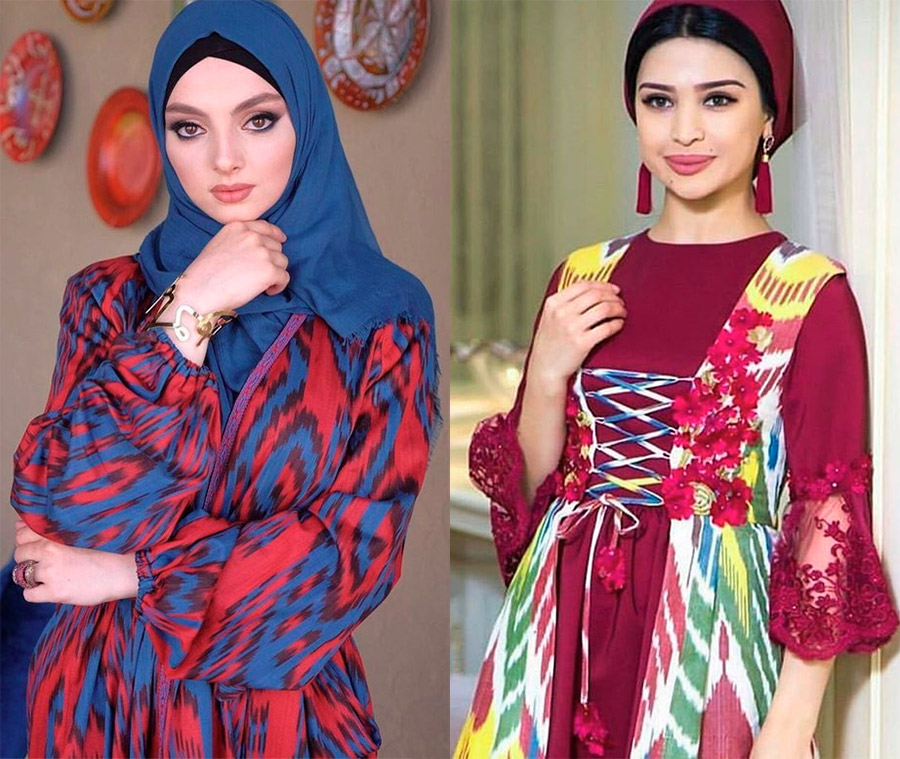
At the beginning of the twentieth century, factory production of textiles flooded the market, so manual labor became unprofitable, and interest in it gradually faded away. But today the original oriental culture is reviving, luxurious fabrics can be seen at all fashion festivals in Central Asia, many designers use them for sewing fashionable clothes and interior.
Designer Oscar De La Renta used ikat fabric in his collections in 2005 and 2008. Uzbek ikat could be seen at the shows of Balenciaga 2007, Dries Van Noten and Gucci 2010, Naeem Khan 2024.
Ikat patterns are found not only on the silk fabric of clothing, but also in the prints of accessories, shoes and the interior. For example, decorative pillows in the East are always in the spotlight. They are an integral part of the interior.
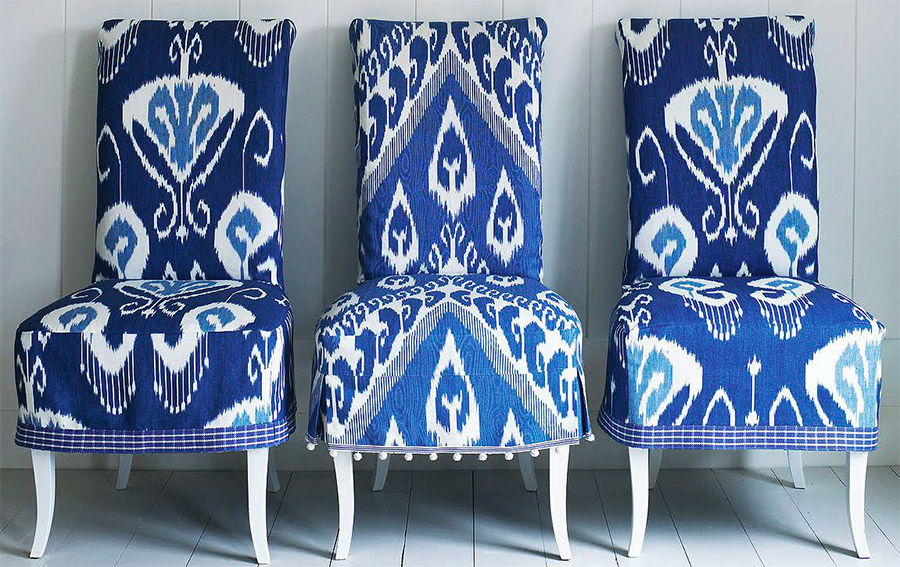
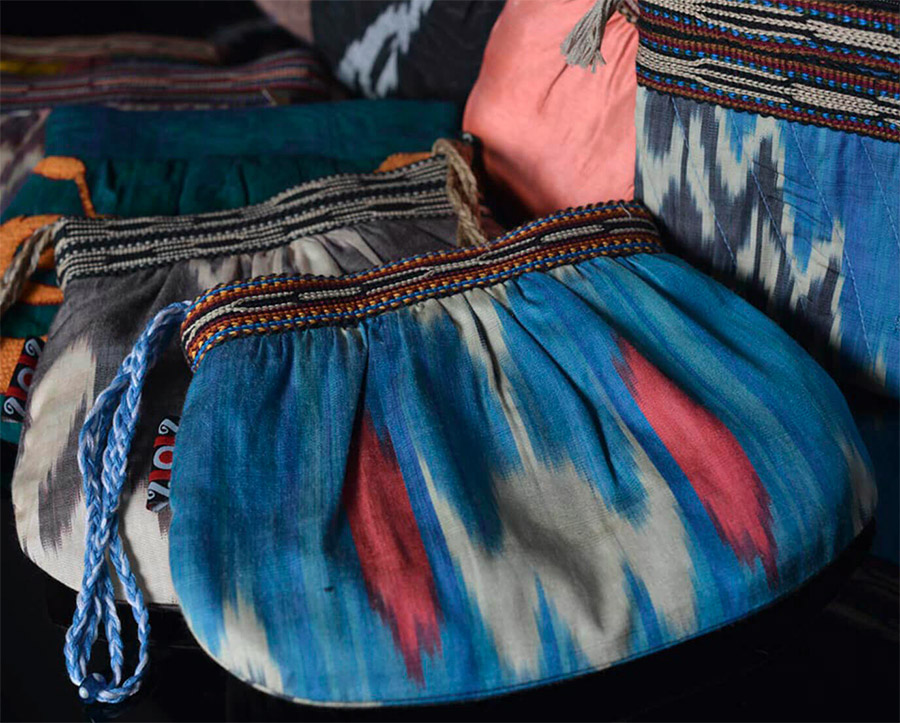
The oriental style does not lose its relevance, and pillows made of ikat fabric look amazing. They can be of different shapes and sizes, but all create warmth and comfort. And the tea party, which takes place in a friendly conversation, leaning against the pillows, will be long and interesting.
Ikat fabric will help decorate both residential and office premises in an oriental style, fill the space with the brightness of oases, the breath of a hot desert, and vital energy.
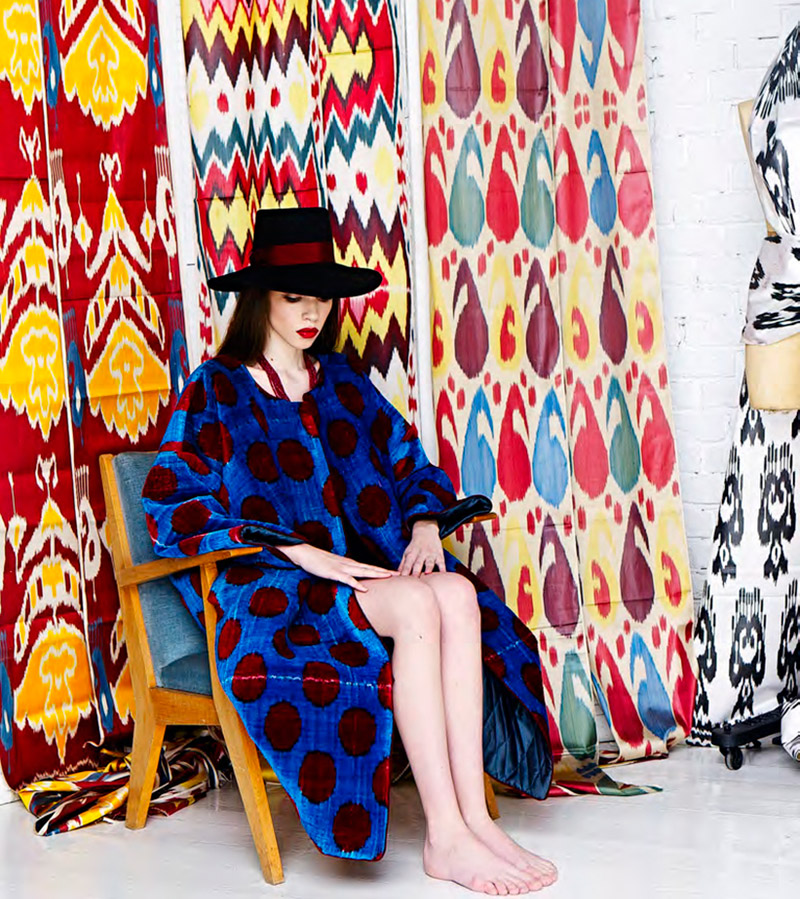
The most expensive ikat fabrics are handmade fabrics. Craftsmanship is passed down from generation to generation. But in the modern world everything is changing, so you can buy cheaper fabrics that are made on the basis of cotton and polyester.
The decorative arts and crafts museums tell the story of ikat production in their displays. Ikat is a true masterpiece with a rich history, it is exotic of the East.

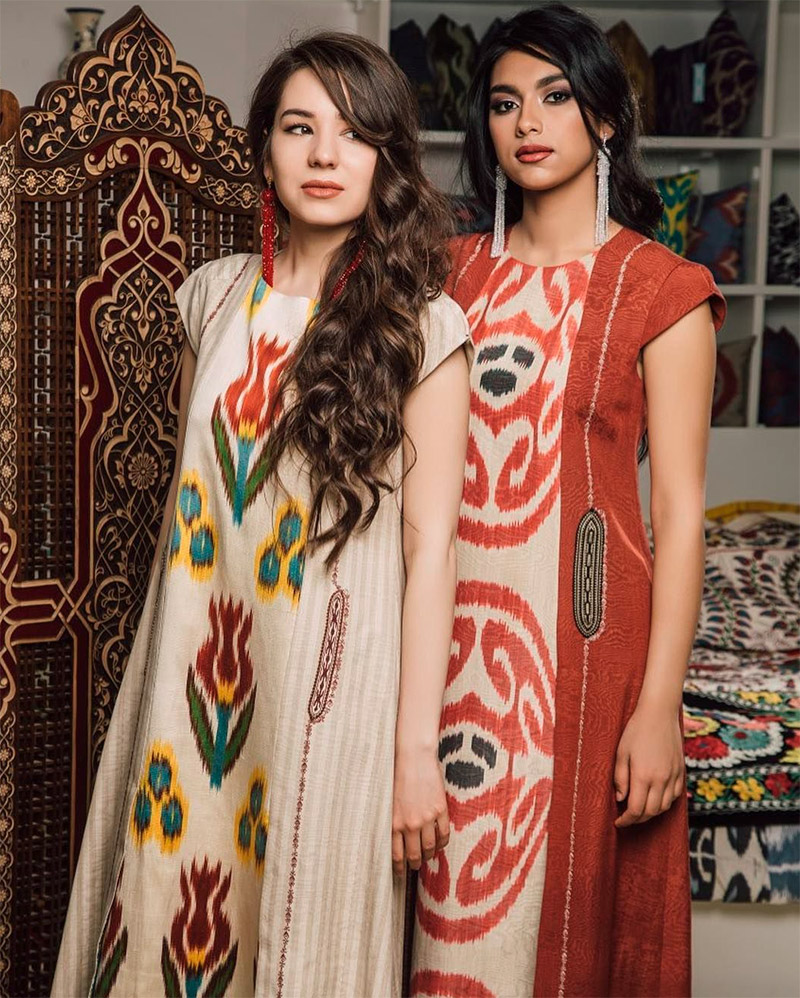
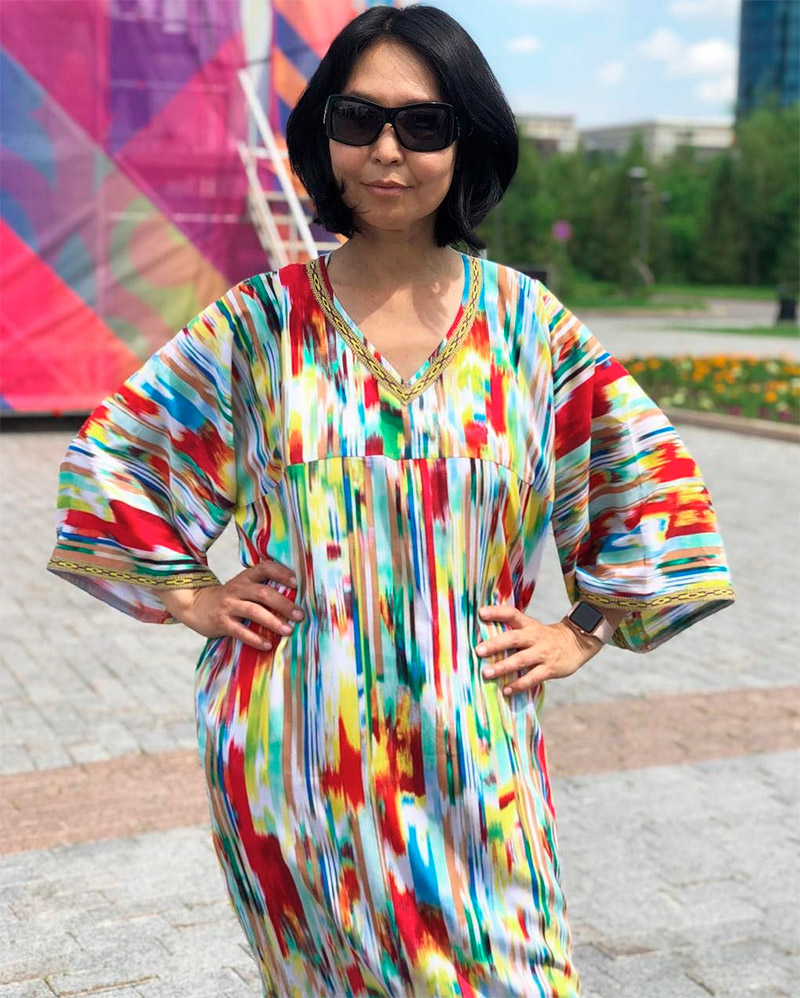
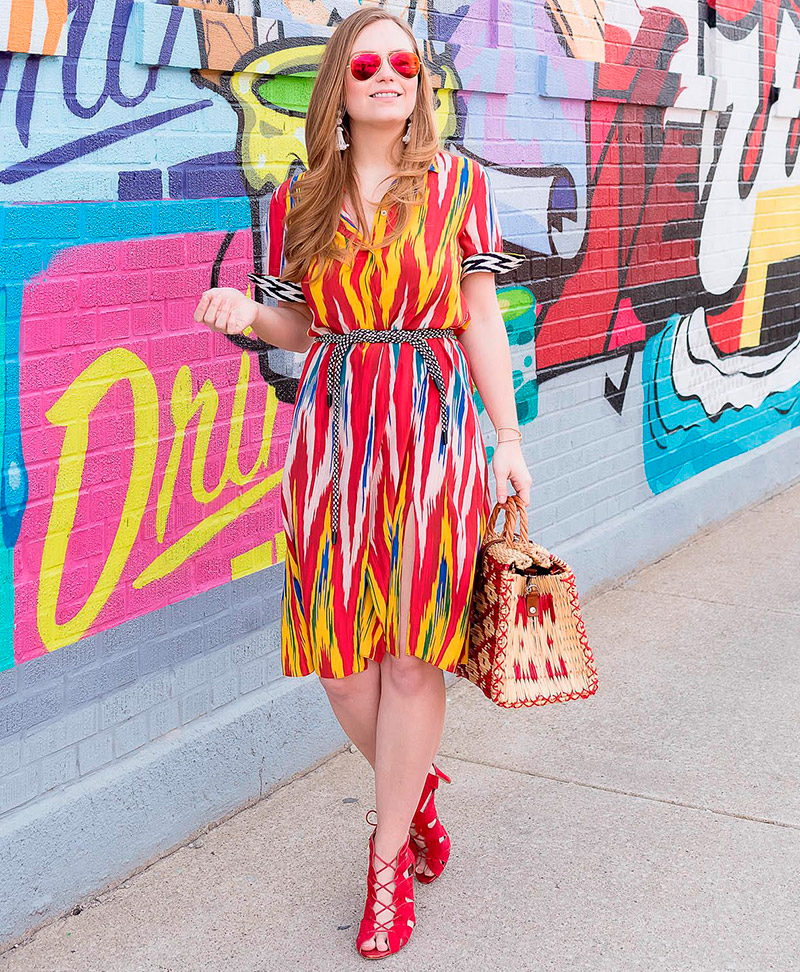
Comments and Reviews
Add a comment
Rating news
Shades of clothing that make women look younger
What shades of hair make women younger: rules and photos
Funny wedding dresses - photos and ideas
12 most expensive down jackets for the winter
How to look 25 at 40: tips from supermodels
Beautiful schoolgirls
Anti-aging haircuts and hairstyles for women
Fashionable skirts for autumn and winter
Fashionable women's trousers for the cold season
Fashionable and stylish sandals for summer 2024
Spring-summer 2024
 Fashionable dresses and tops with thin spaghetti straps
Fashionable dresses and tops with thin spaghetti straps
 Bandana tops: how to wear stylishly and beautifully
Bandana tops: how to wear stylishly and beautifully
 How to put together the perfect men's wardrobe for the summer
How to put together the perfect men's wardrobe for the summer
 Fashionable shorts for spring-summer 2024
Fashionable shorts for spring-summer 2024
 Fashionable skirts for spring-summer 2024: a guide to online shopping
Fashionable skirts for spring-summer 2024: a guide to online shopping
 The most fashionable dresses spring-summer 2024: styles and colors
The most fashionable dresses spring-summer 2024: styles and colors
 Fashionable total look 2024: ideas of images and trends
Fashionable total look 2024: ideas of images and trends
